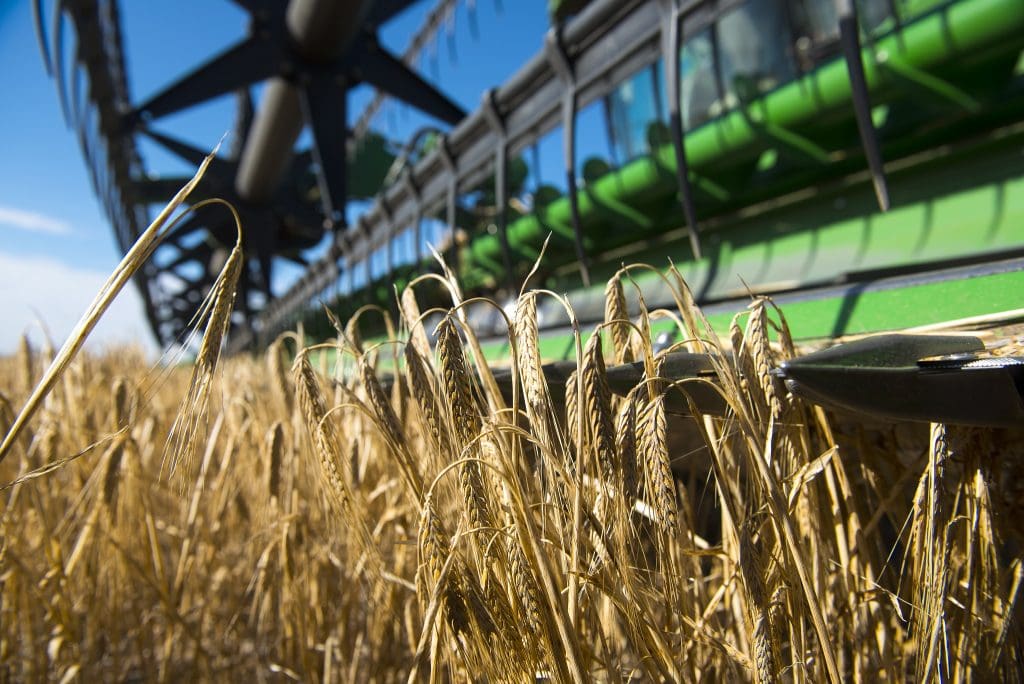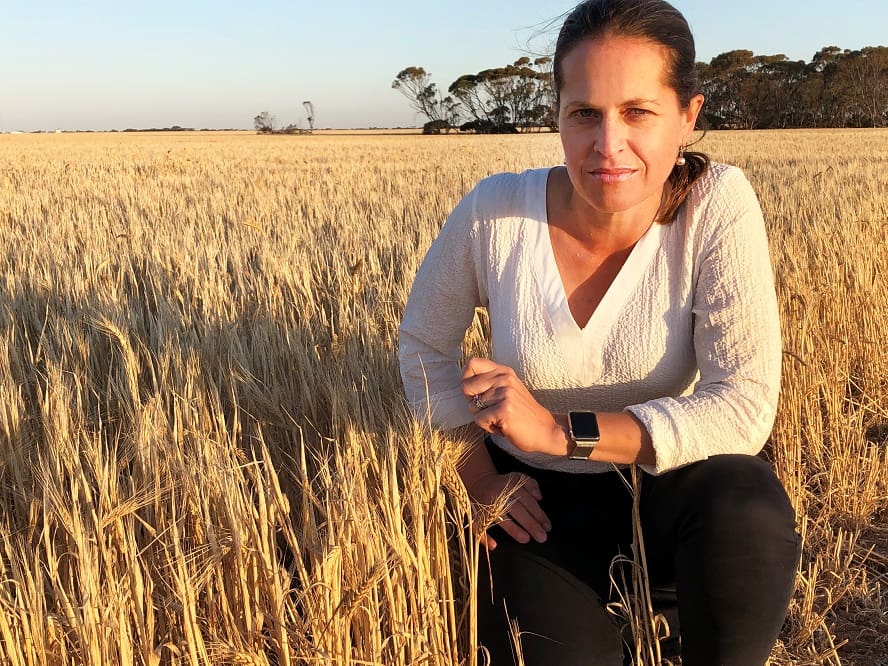
AUSTRALIA is set for a second consecutive bumper winter harvest, with total production forecast to come in just five per cent shy of last year’s near-record crop, according to Rabobank.
In its just-released ‘Australian Winter Crop 2021/22 Production, Price and Inputs Forecast’, the specialist agribusiness bank estimates the nation will harvest 52.87 million tonnes (Mt) of winter grains, oilseeds and pulses this season.
While down five per cent on last year’s crop, this is still a hefty 25pc above the five-year average.
Canola is the stand-out mover, with production estimated to reach a new record of 5.16Mt (up 14pc on last year and a stellar 48pc above the five-year average), driven by increased planting and favourable growing conditions in many regions.
Australia’s wheat production is expected to come in at 31.9Mt (down 4pc on last year, but still 35pc above the five-year average).
Barley production is forecast to be down 10pc on last year to 11.7Mt, though also still up on the five-year average by 7pc.
Report co-author, Rabobank agriculture analyst Dennis Voznesenski, said Australia’s second consecutive very large winter crop “comes at an opportune time for local growers, with global shortages and high prices for grains and oilseeds”.
“Short global supplies of grains and oilseeds will continue to support Australian prices over the year ahead,” he said.
“And although global prices can be expected to soften as new crops in different regions around the world come into play, the uncertainty that exists around seasonal conditions in grain-growing areas and the process of global grain stocks re-building will keep prices at least above the range of the last six to seven years.”
The report notes favourable growing conditions in Australia have seen expectations of increased amounts of high-protein wheat in Queensland, South Australia and Western Australia this harvest – “timed perfectly” with a current global shortage of high-protein wheat, due to drought in North America.
Other factors of note for this year’s winter crop include a lower supply of malt-quality barley – due to a reduction in barley planting, and particularly malt varieties – and less grain baled for hay because of export concerns due to a largely-closed Chinese hay market.
“There is also a proportion of last year’s record east coast harvest – 10 to 15 per cent – that remains on farm,” Mr Voznesenski said.
“And this will compete with the coming crop for storage space and mean more delivery and price pressure during harvest.”
Exports
Rabobank forecasts Australia’s total grain exports to increase again this year – by 5pc year on year (YOY) and to include 24.5Mt of wheat, 7.8Mt of barley and 4.3Mt of canola.
“A second very large harvest means that Australia’s stocks will now be replenished after the drought so we will be able to lift exports in 2021/22 despite production coming in lower than last year,” Mr Voznesenski said.
“We expect Australia will again be able to deliver a strong export performance into South East Asia, with Australian wheat continuing to be the price setter across the region. This is due to lower prices in Australia as a result of the substantial surplus that will be available, but also favourable freight costs compared with grain from further afield – an advantage that increases in times of high-cost freight like we currently have and expect to continue in 2022.”
States
Rabobank forecasts 2021/22 winter crop production to be up by 18pc in both WA and Queensland – off the back of improved rainfall over the growing season in both states.
New South Wales production is expected to be down 14pc on last year’s record harvest in the state, but still nearly 70pc above the five-year average.
South Australia’s crop is forecast to decline 10pc YOY, due to less favourable planting conditions and patchy rainfall, while Victoria is set to record the largest decline in production – down 24pc on last year, primarily due to drier conditions in the western part of the state.
Wheat outlook
For wheat, the Rabobank report says low world stocks will keep global prices at high levels.
Report co-author, Rabobank senior commodities analyst Cheryl Kalisch Gordon, said global wheat stocks had fallen, particularly in exporting nations, and were on track to decline materially over the next nine months, exerting upward pressure on Chicago Board of Trade (CBOT) wheat prices in the year ahead.

Cheryl Kalisch Gordon
“This has been driven by high usage of wheat in animal feed, substituting for corn, which is in low supply, and also due to downgraded wheat quality in the EU relegating it stock feed use,” she said, “while there has also been steady growth in food consumption.”
The bank expects CBOT wheat to trade in the USc725-740/bushel range until the second quarter of 2022, when it is forecast to decline as northern hemisphere new crop supply becomes available, but continuing above USc700/bu for the balance of 2022, given the stock rebuilding that will be required.
For local wheat prices, the bank expects to see “price resilience” during the remaining months of 2021, despite “harvest pressure and the favourable harvest volume”, Dr Kalisch Gordon said.
“This is due to the strong demand we expect as the world searches for wheat after the northern hemisphere harvest finishes and with some assistance of further softening of the Australian dollar,” she said.
This should especially be the case for higher-protein wheat.
The bank expects the Australian dollar will remain in the low US70 cent range, supporting Australian wheat values over the year ahead.
Barley
For Australian barley, while Rabobank does not expect China to return as a market “to a material degree even in the mid term”, the tight global corn market is set to support barley demand over the coming year.
“Prices will be supported as buyers, especially in South East Asia and the Middle East, continue to find good value in barley as a substitute for corn in livestock feeding,” Dr Kalisch Gordon said.
Local demand for feed barley is also expected to remain steady, with the number of cattle on feed in Australia remaining above one million head and demand for export beef staying buoyant, along with steadily growing demand from the poultry sector.
“Malt barley demand is also improving, with recovering beer demand globally as the world opens after COVID-19,” she said.
Local barley prices are forecast to appreciate marginally after harvest and in the first half of 2022, before softening at the back end of 2022, however remaining at above average.
Canola
For canola, the report says, record high prices off the back of low global stock levels – due to poor seasons in Canada and the European Union – should see expanded production in the northern hemisphere next season.
This will lead to a substantial re-supply in global canola stocks in 2022, however the impacts of the current low global stock situation will be felt over the coming year.
“With the deep hole in global canola stocks and still some re-supply uncertainty, global prices are expected to remain elevated into the second quarter of 2022, before softening, but remaining materially above five-year averages for the balance of next year,” Dr Kalisch Gordon said.
“Locally, we expect the same pattern with Australian canola prices, though with some harvest pressure in quarter four this year, with the forecast record canola harvest that is expected.”
Source: Rabobank



HAVE YOUR SAY